Bears, bears, bears. Why are urban sightings of black bears way up in Vermont?
It has been a busy year for Jaclyn Comeau, black bear project leader for the Vermont Department of Fish & Wildlife. Comeau logged 24 reports of bear incidents in South Burlington this year, an unprecedented number. And that number could increase further, Comeau said, as bears are "still active on the landscape."
Last year there were three reports of bear incidents in South Burlington. There were three reports in 2021 as well, none in 2020, eight in 2019 and one in 2018. From 2011 through 2017 there were no reports of bear incidents in South Burlington.
In past years, these much lower numbers in South Burlington reflected a few young bears who were "dispersing," finding their own territories, and stumbled into the area, but they never stuck around for long. This year an adult female bear with two cubs showed up in South Burlington ? a far different scenario, Comeau said.
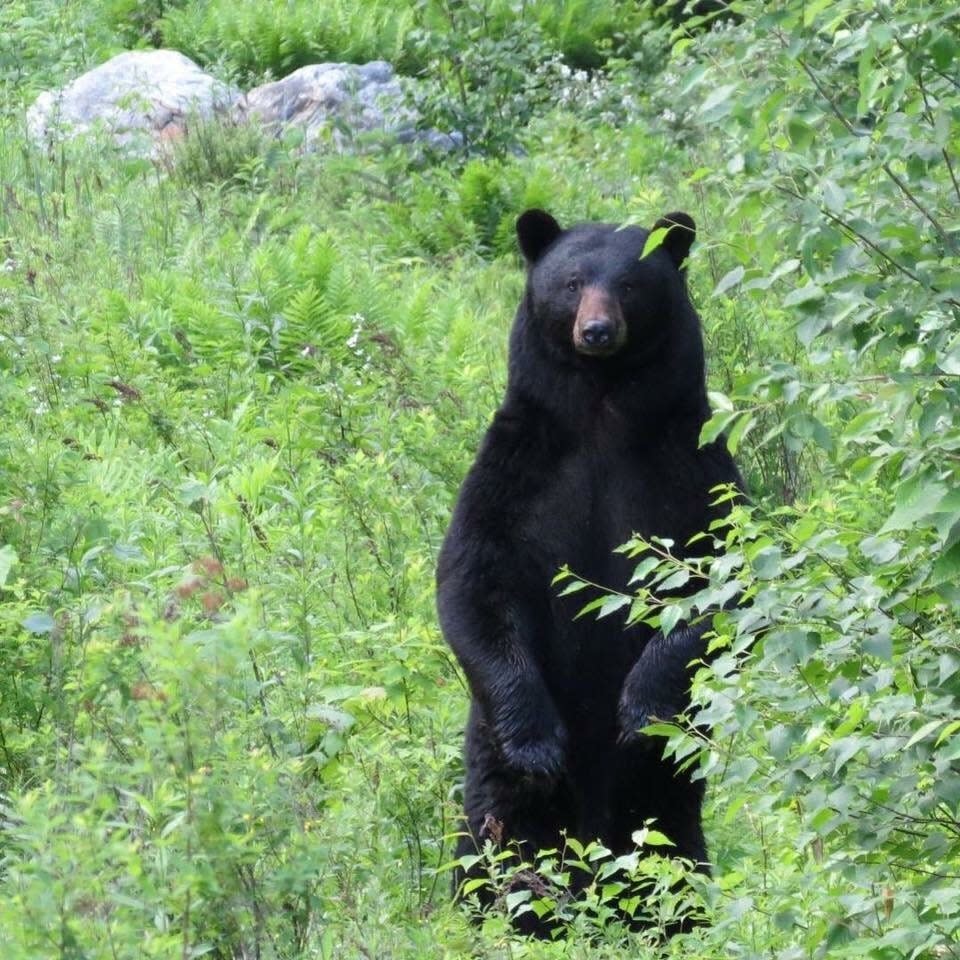
"I would say those three bears generated a lot of those reports," she said.
Comeau's message to folks in the Burlington area is that they're living with bears now.
"Most sightings are coming from South Burlington or Shelburne," she said. "Essex and Essex Junction are also places we're starting to get reports, also Montpelier and Waterbury."
Bears are hitting towns and resorts all over the state
The increase in urban bear activity in Vermont is statewide. Comeau said she received lots of reports of bear incidents last year from Barre, Barre City and Rutland. She regularly gets reports from Brattleboro, St. Johnsbury, White River Junction and Bennington.
"We're getting reports from a lot of our bigger towns, where it's very residential and there aren't big tracts of forest," Comeau said.
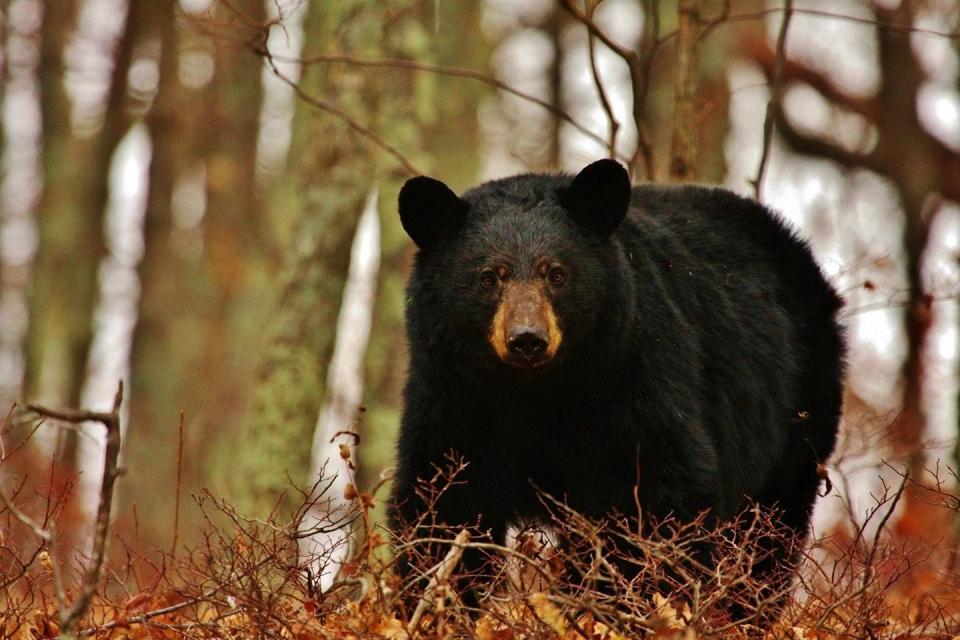
Resort communities are another hot spot for bear sightings, including the Stowe, Killington, Stratton, Dover and Wilmington areas.
"There are a lot of short-time residents or vacationers (in resort communities), folks who are na?ve to being in bear country," Comeau said. "The other thing is there are a lot of restaurants and concentrated residential areas, whether condos or whatnot, that create large volumes of food."
We have lots of bears right now and that means lots of sightings
So what's behind the increased number of reports of bears in urban areas? One factor is the five-year high in the population of black bears Vermont is currently experiencing, of between 7,000 and 8,500 bears.
"The more bears on the landscape and the more people on the landscape the more opportunities to interact," Comeau said. "I do think having a high bear population is an influencing factor, but not the only factor. Natural food availability has this underlying influence."
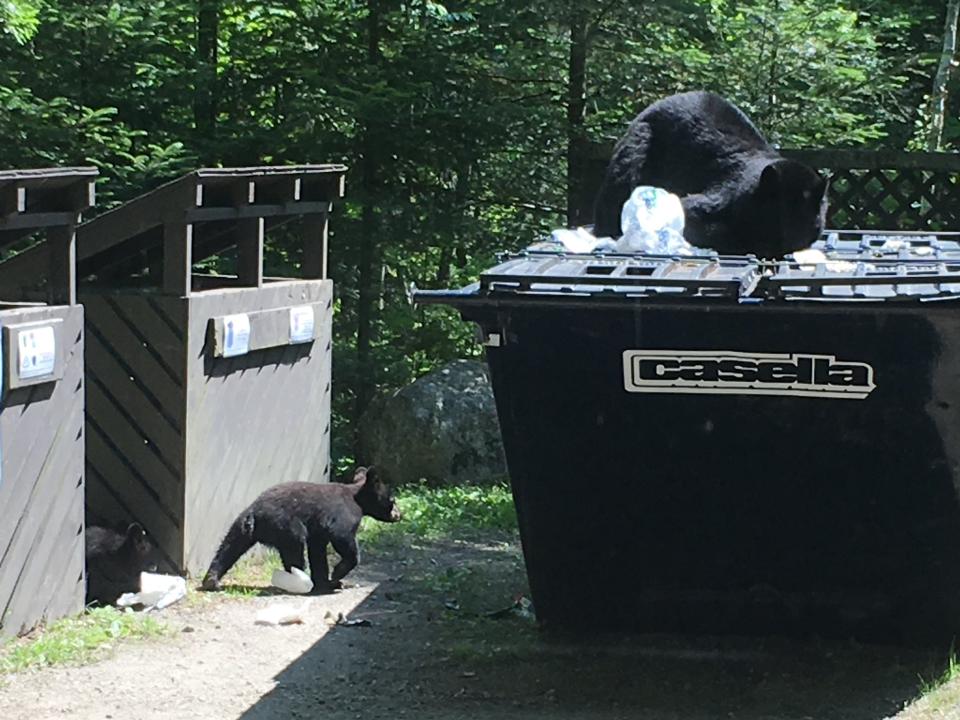
One of the most important natural foods for bears is beechnuts. This year we had a good crop. Once the nuts are available in the forest, black bears tend to lose interest in the garbage and bird feeders urban areas have to offer.
Bird feeders are a major draw for black bears, thus a big driver of conflicts, accounting for 15% of all human-bear conflicts in Vermont between 2011-2022, according to Comeau. Garbage topped the list of attractants for that time period, accounting for 45% of all conflicts. Chickens accounted for 13% of conflicts and compost drove another 10% of conflicts. The remaining 17% of conflicts were split among beehives, livestock and crops.
"Research is clear that wild food availability significantly influences human-bear conflicts ? when wild foods are productive, more bears spend more time eating those foods and less time looking for human foods," Comeau said.
Comeau admits the connection between the beechnut crop and human-bear conflicts "doesn't 100% make sense," because the nuts are only available in the fall, and most conflicts are happening in the spring and summer.
"Despite not fully understanding the nuances of the pattern between beechnut availability and reports of human-bear incidents, we aren't surprised by it," Comeau said.
Chickens, honey and compost, but most of all, garbage attracts bears
Comeau has prioritized making it easier to report human-bear conflicts with an online form available at Fish & Wildlife's website. Many people's first instinct, however, is to call their local police department when they spot a bear. Police are not obligated to report bear incidents to Fish & Wildlife, but Comeau said her impression is there's a lot of cooperation between law enforcement and game wardens.
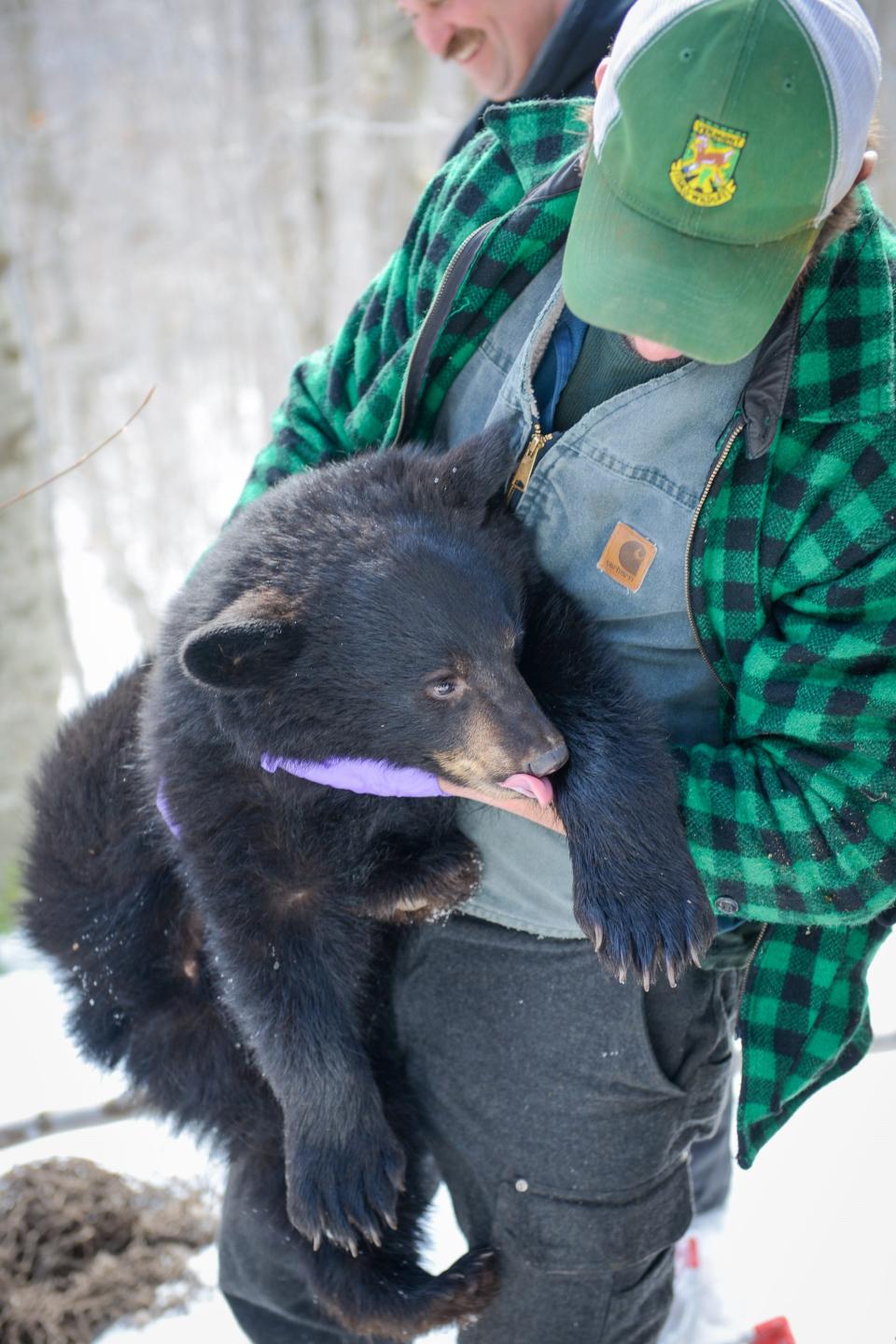
"Each game warden has a district in the state with typically six to 10 towns," she said. "Those game wardens, for the most part, are pretty well connected with police in those communities. If someone is calling the local police, that is probably getting forwarded to game wardens."
Comeau realizes she can only do so much to influence whether someone will bother to report a bear sighting, but she's trying to make it as easy as possible. Her other big focus is trying to educate Vermonters on how to coexist with bears.
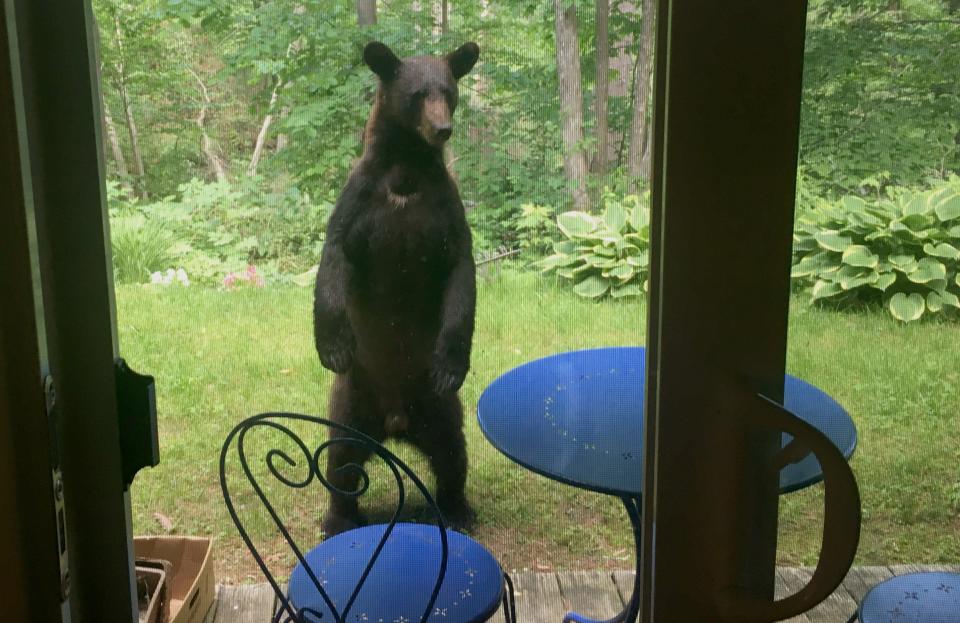
With that in mind, the Fish & Wildlife website reminds everyone to:
Keep chickens and honeybees secure within an electric fence or other bear-proof enclosure.
Never feed bears, deliberately or accidentally.
Feed your pets indoors.
Feed birds from December to March only.
Store trash in a secure place. Trash cans alone are not enough!
"They're such a charismatic species," Comeau said of black bears. "They're really interesting because they need a lot of space and a lot of different types of food. But they're also flexible (in what they eat), which makes them very resilient and complicated to co-exist with."
Contact Dan D’Ambrosio at 660-1841 or [email protected]. Follow him on Twitter @DanDambrosioVT. This coverage is only possible with support from our readers.
This article originally appeared on Burlington Free Press: Vermont bear expert tracks human-bear conflicts across the state.